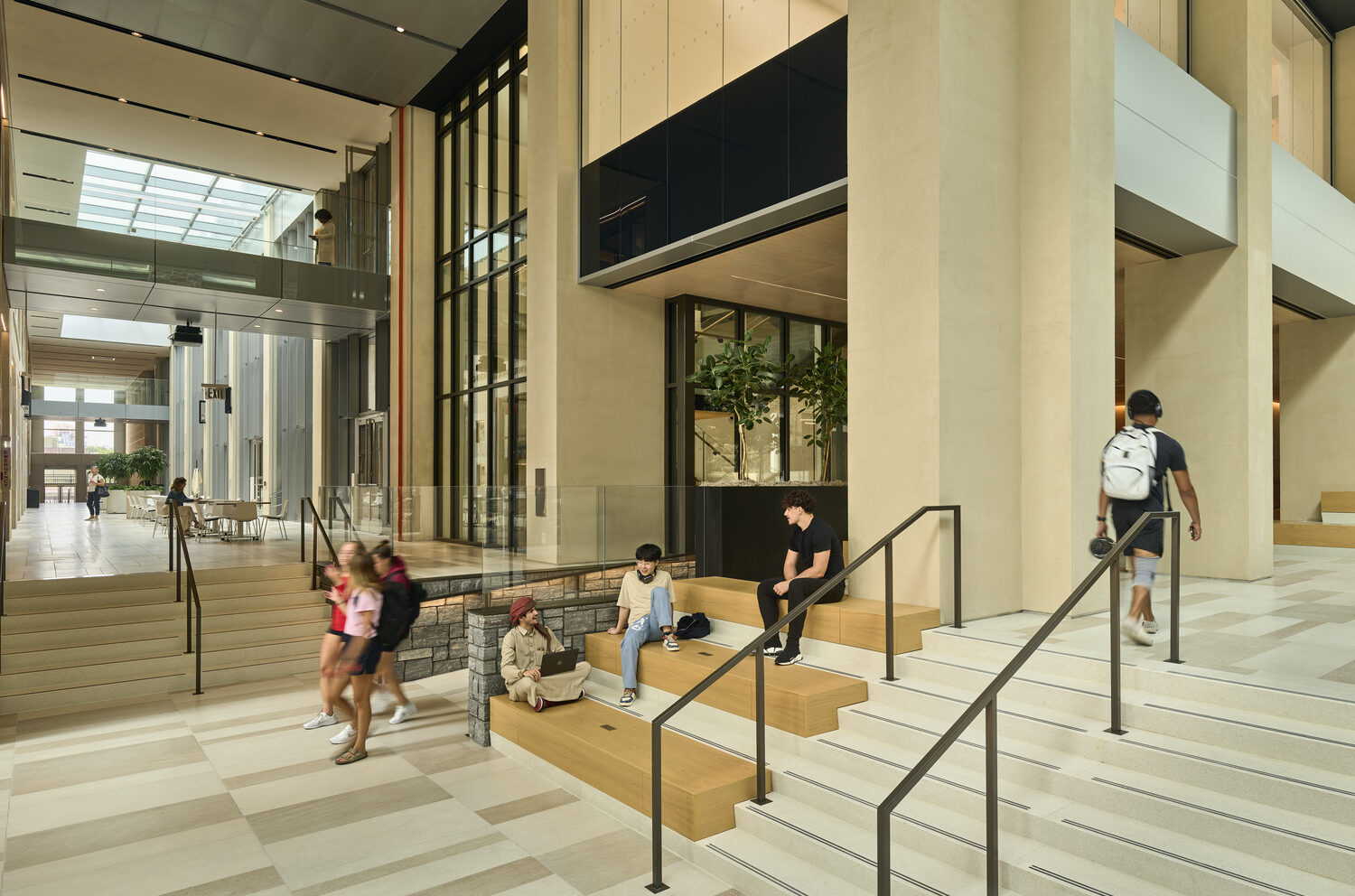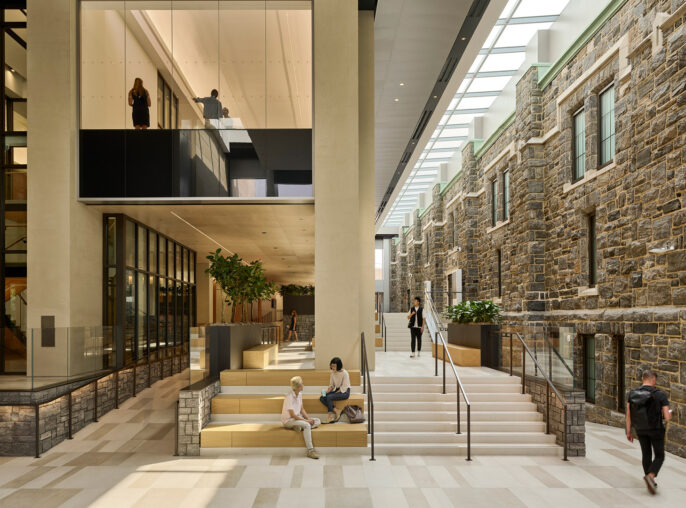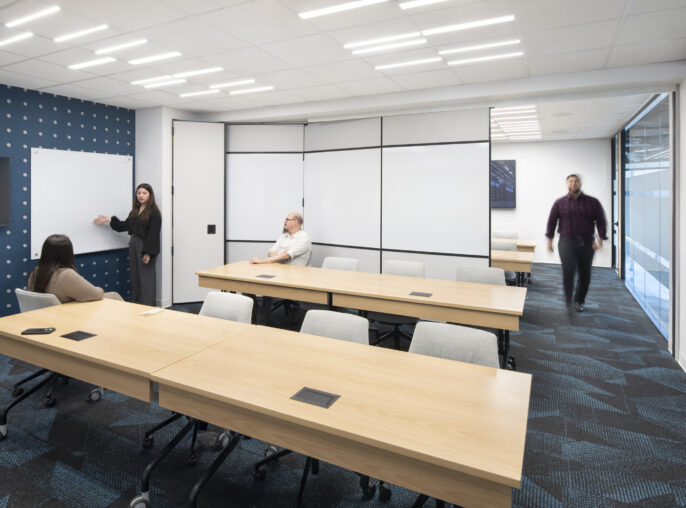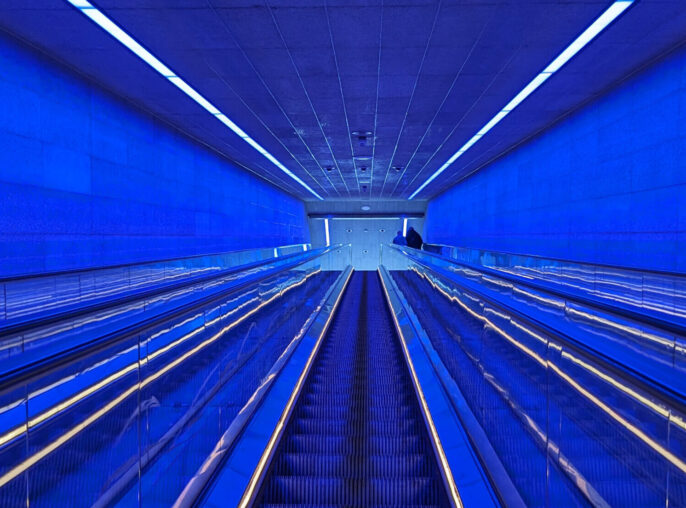Trends Shaping Higher Education Design in 2025 and Beyond

Higher education design is rapidly evolving to meet the needs of diverse student populations, fostering closer ties with community, and align with sustainability goals. Through insights from leading institutions, we’ve identified four key trends shaping the future of campus planning and design.
1. The Rise of the Third Place
Colleges and universities are reimagining campus spaces to function as “third places”—environments outside the classroom and home that encourage social interaction, rest, informal learning, and creating memories. Housing amenities, cultural hubs, and student life spaces are in high demand as students seek opportunities for connection and community. Libraries are transforming into technology-rich centers featuring innovation labs and digital resources. Flexible, adaptable spaces with reconfigurable furniture and diverse seating options are critical to meeting these evolving needs.
2. Expanding Access for Non-Traditional Students
Demographic shifts, the new economy, and lessons learned from the COVID-19 pandemic are driving institutions to cater to a broader audience, including adult learners, workforce trainees, and global online students. This shift demands affordable, accessible programs that provide parity between in-person and remote learning experiences. Designing with inclusion in mind—from multi-use spaces to virtual access—ensures education remains relevant to all learners.
3.Inclusive and Monetized Spaces
Financial constraints are pushing universities to rethink how they utilize and monetize their spaces. Partnerships with private enterprises, leasing facilities, and flexible commercial use are emerging strategies. Simultaneously, inclusive design principles are shaping campus spaces, including prayer rooms, gender-neutral restrooms, lactation rooms, and spaces designed for neurodiverse individuals. Thoughtful attention to sensory design—lighting, sound, and color—further supports a diverse range of students and faculty.
4. Sustainability and Wellness
Sustainability is now a non-negotiable aspect of higher education design. Institutions are investing in renewable energy, net-zero buildings, and efficient stormwater management to minimize their environmental footprint. Campuses are also embracing outdoor spaces that promote social interaction and mental health. Beyond the built environment, wellness initiatives are expanding to address food insecurity, mental health, and academic advising, reinforcing the holistic well-being of students.
Conclusion
At its core, the future of higher education design is about enabling people—students, faculty, and staff—to thrive. By addressing diverse needs, fostering inclusivity, and committing to sustainability, universities can remain catalysts for social mobility and innovation. The challenge is not just to build spaces but to create environments that empower individuals to succeed, no matter their circumstances.
Thank you to representatives from Cornell University, Rowan University, Montclair State University, Rutgers University, and NJIT for their valuable insights.
Ed Stand, LEED BD+C, AIA, is a Principal at HLW and the firm’s Director of Delivery. Ed brings more than 25 years of experience in offering clear direction and daily support to project members, consultants, and vendors, ensuring their success. His strategic approach involves tracking project progress against set objectives and optimizing team efforts for enhanced communication and efficiency. He works together with Managing Partner Bennet Dunkley on HLW’s higher education sector work.


